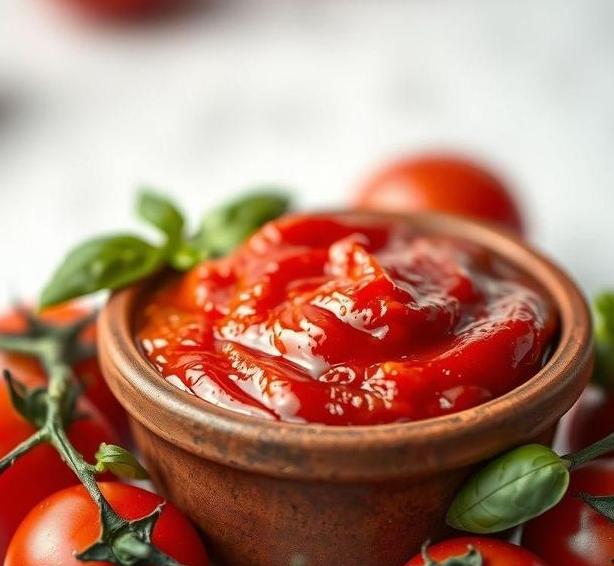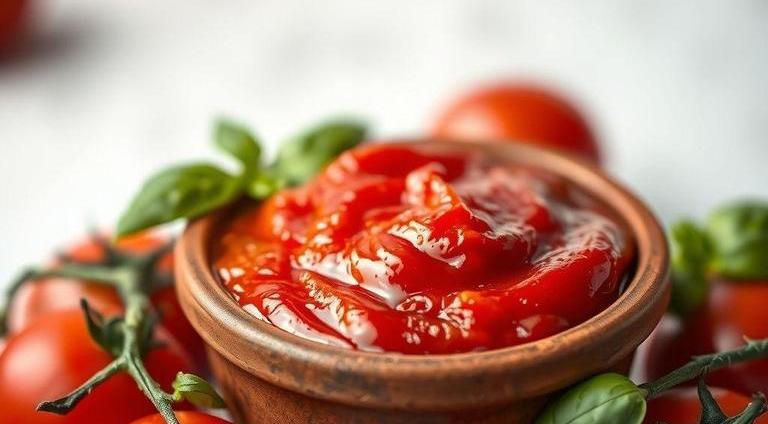Can Tomato Paste Go Bad : What You MUST Know
Tomato paste is one of those kitchen staples that can add incredible depth of flavor to sauces, soups, stews, and even some savory baked dishes. It’s concentrated, rich, and packed with the natural goodness of tomatoes. But like any perishable food product, tomato paste doesn’t last forever. Whether you’re using it in a huge batch of homemade pasta sauce or adding a spoonful to your chili, the big question often arises: can tomato paste go bad? And if it can, how do we store it to get the most out of this tomato treasure?
Let’s dive into the life cycle of tomato paste, how to tell when it’s no longer safe to use, and how you can make sure it stays fresh for as long as possible.
Can Tomato Paste Go Bad?
Yes, tomato paste can go bad, though it often takes a little longer than many other types of perishable foods. The key to determining if tomato paste has spoiled lies in understanding what happens to it as it ages. Tomato paste, like other canned goods, undergoes a preservation process that extends its shelf life. However, once the can is opened or the paste is exposed to air and moisture, the risk of spoilage increases.
What’s happening is simple: like many foods, tomato paste contains natural sugars, acids, and water. Over time, these elements interact with bacteria, molds, and yeasts that can cause the paste to spoil. Even if you’re storing it properly, there are still environmental factors, like humidity or temperature shifts, that can speed up the degradation process.
Shelf Life For Tomato Paste

Understanding how long tomato paste lasts will depend on whether it’s unopened or opened. There’s a marked difference between the shelf life of sealed cans and the opened product.
Unopened Tomato Paste (Canned)
- Best-by date: Most cans of tomato paste come with a best-by or use-by date. This is an indication of when the paste will be at its peak quality, but it doesn’t necessarily mean the paste will be unsafe after that.
- Shelf life: Typically, an unopened can of tomato paste can last for 1 to 2 years beyond its best-by date if stored in a cool, dry place.
- Storage conditions: Store cans in a pantry or cupboard, away from direct sunlight and moisture. Avoid storing them in places with fluctuating temperatures, such as above the refrigerator or near a stove.
Opened Tomato Paste (After Canning)
-
Once opened, tomato paste doesn’t stay fresh as long, but it can still last for a good amount of time.
- Refrigerator life: If stored properly in the fridge, opened tomato paste can last for 5 to 7 days.
- Freezer life: If you have leftover tomato paste and can’t use it all within a week, you can store it in the freezer. In a tightly sealed container or freezer-safe bag, it can last for 3 to 6 months. This is a great option for preserving any excess paste.
Common Signs Of Spoilage
Even if your tomato paste has a decent shelf life, you should always check for signs of spoilage before using it. Spoiled tomato paste can not only taste bad but could make you sick.
Visual Clues
- Discoloration: Fresh tomato paste is a vibrant red color. If you notice darkened, brownish, or blackened spots, it’s a warning sign. These color changes might indicate mold growth or the start of oxidation.
- Mold: The most obvious sign of spoilage. Mold can appear as fuzzy, white, green, or even black patches on the paste. If you see mold on the surface, discard the entire can or jar-mold can spread deeper into the paste than what’s visible on the surface.
- Separation: While it’s normal for tomato paste to have some liquid separation, a large amount of liquid pooling at the top is not ideal. This could indicate fermentation or over-aging.
Odor Clues
- Off or sour smell: Tomato paste has a rich, sweet-tart smell. If it starts to smell sour, rancid, or musty, it’s a clear sign that it’s no longer safe to consume.
Texture
- Slimy or sticky: If the paste feels slimy or unusually sticky, that’s another indicator of spoilage. Fresh paste should be thick and smooth, not slippery or gooey.
How To Store Tomato Paste?

Proper storage is crucial for maintaining the freshness and longevity of your tomato paste, especially after opening the can. Here are some key strategies:
Use Airtight Containers
- Once opened, transfer the leftover tomato paste into an airtight container. It’s best to use glass or plastic containers with tight-fitting lids. This minimizes exposure to air, which can lead to spoilage.
- If you prefer to keep the paste in the can, press a piece of plastic wrap directly onto the surface of the paste before sealing it with a lid.
Refrigerate Immediately
- Always refrigerate your opened tomato paste. The refrigerator temperature will slow the growth of any harmful bacteria or mold. Keep it in the main compartment (not in the door) where the temperature is consistent.
Freezing For Longer Storage
- If you don’t think you’ll use the leftover paste within a week, freeze it. A convenient way to freeze tomato paste is to scoop it into an ice cube tray. Each cube can hold about 1 tablespoon of paste, so you can easily pop out small portions when needed.
- Once frozen, transfer the cubes to a freezer bag or container. This can save space and make the paste easier to use later.
Avoid Cross-contamination
- Always use a clean spoon when scooping out the paste. This prevents contamination and the introduction of bacteria, which can shorten its shelf life.
Expert Tips
- Keep It Clean: When scooping out paste from an opened can or jar, always use a clean utensil. Double-dipping or using a utensil that’s been in contact with other foods can introduce bacteria into the paste, accelerating spoilage.
- Use Tomato Paste in Small Portions: If you’re often left with leftover tomato paste, consider buying it in small cans or tubes instead of larger ones. This minimizes the risk of having to store opened paste for too long.
- Freeze in Portions: If you freeze the paste, make sure to portion it out in sizes that match the amount you typically use (for instance, tablespoon-sized portions). This makes it easier to defrost and use exactly what you need without wasting any paste.
FAQs
Can Tomato Paste Go Bad After Opening?
Yes, tomato paste can go bad after opening. Once opened, it should be stored in an airtight container in the refrigerator to maintain its quality. Typically, it will last 5 to 7 days before starting to deteriorate.
How Long Does Tomato Paste Last In The Pantry?
Unopened tomato paste can last for 12 to 18 months in the pantry, as long as it is stored in a cool, dry place and the can remains sealed. After this time, it may lose flavor and quality.
How Can I Tell If Tomato Paste Has Gone Bad?
Signs that tomato paste has gone bad include an off or sour smell, discoloration (especially darkening), mold growth, and changes in texture. If it has any of these symptoms, it should be discarded.
Can You Freeze Tomato Paste To Extend Its Shelf Life?
Yes, you can freeze tomato paste to extend its shelf life. It can be frozen in small portions, such as in ice cube trays, and stored in a freezer-safe container for up to 6 months.
What Is The Shelf Life Of Unopened Canned Tomato Paste?
Unopened canned tomato paste can last between 12 to 18 months past the printed expiration date if stored properly in a cool and dry environment.
Does Tomato Paste Spoil If Left Out Overnight?
Yes, if tomato paste is left out at room temperature for an extended period (more than 2 hours), it can spoil. Bacteria can begin to grow, leading to foodborne illness, so it’s best to refrigerate it promptly.
Can Tomato Paste Become Toxic?
While tomato paste doesn’t usually become toxic, consuming paste that has developed mold or has been improperly stored for long periods can lead to foodborne illness. It’s always safer to discard questionable paste.
Does Tomato Paste Lose Its Flavor Over Time?
Yes, tomato paste can lose its flavor over time, especially after opening. The paste will become less vibrant and may develop a bitter taste if it has been stored too long or improperly.
How Should Tomato Paste Be Stored After Opening?
After opening, tomato paste should be stored in an airtight container in the refrigerator. You can also cover the paste with a thin layer of olive oil to help preserve its freshness.
Can I Still Use Tomato Paste Past Its Expiration Date?
If the tomato paste is unopened and has been stored properly, it is likely safe to use past its expiration date. However, if it’s opened or showing signs of spoilage, it should be discarded.
